The 11 best content calendar Software in 2025
Looking for the best content calendar software to streamline your marketing workflow? In this guide, we’ve compared the top 11 tools of 2025 to help you plan, schedule, and collaborate on content seamlessly across channels.
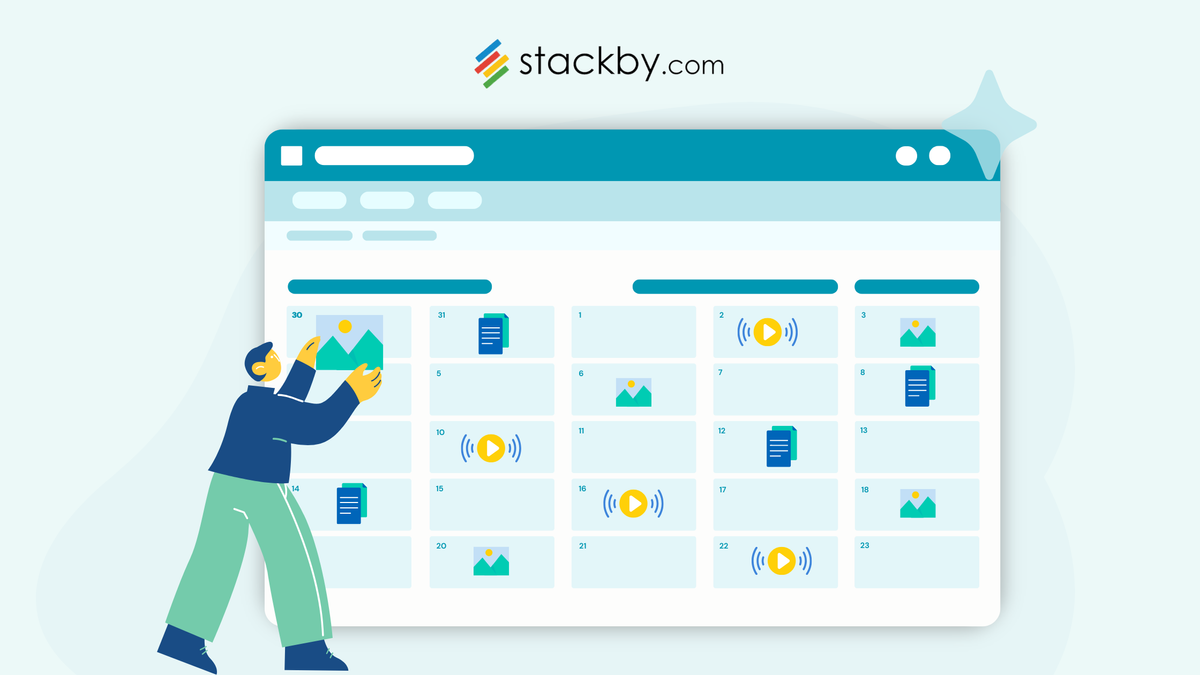
The process of unlocking content chaos begins with a single small change, a content calendar tool. It is the key to those brands that you love, as it helps them to plot campaigns, identify opportunities, and keep themselves organized since guessing is no longer effective. Think of dealing with a buzzing marketing schedule without skipping a beat. That is the actual change the right content calendar software makes.
In this blog, you will find out the best 11 content calendar software in 2025, each of them loaded with smart features, which will enable you to plan, track, and implement each and every content idea. By the end, you will be well aware of what tools are relevant for your team and how to improve your process with confidence and comfort.
Benefits of using content calendar software
The key to keeping up with the current rapid digital environment is good content calendar software. It organizes the mess by keeping all your plans, deadlines, and ideas in a single place and hence nothing falls through the cracks. When you have a content calendar tool, your whole team is aware of what is going live, when, and who is in charge, eliminating confusion and last-minute scramble.
By planning ahead, you will have extra time to produce quality content and adjust to new trends as they emerge instead of panicking. Moreover, it is simple to identify gaps, balance the types of content, and maintain campaigns running smoothly with the right content calendar software. The end result? An effective, efficient professional workflow, which allows your business to stay steady and earn the actual audience's trust, one post at a time.
The 11 Best Content Calendar Tools
Here’s an overview of the top 11 content calendar tools of 2025 that will help you in choosing the one that suits your teams. Let's explore!
1. Stackby
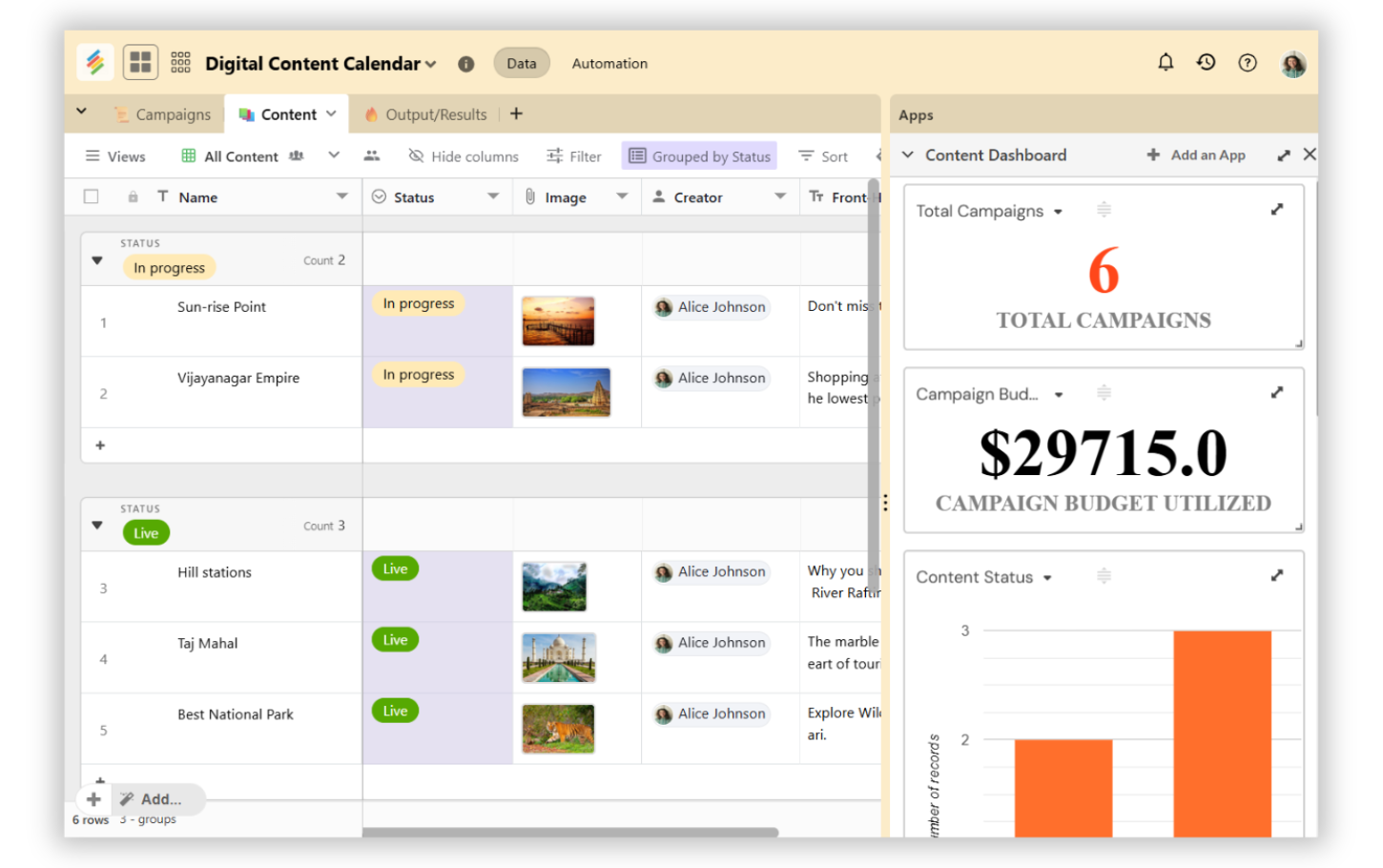
Stackby is a versatile and robust content calendar tool designed to suit companies seeking customization and simplicity. It is an integration of the simplicity of spreadsheets and the power of a database that enables teams to plan, schedule, and track any content effortlessly through a familiar interface.
Stackby AI is an intelligent automation for your workflow that enables users to use AI-driven insights to organise, categorise, and plan efficiently. You can create personal content calendars, connect with third-party services (such as Google Analytics, Mailchimp, YouTube, and Facebook), create reminders automatically, and even create smart summaries, all at your fingertips.
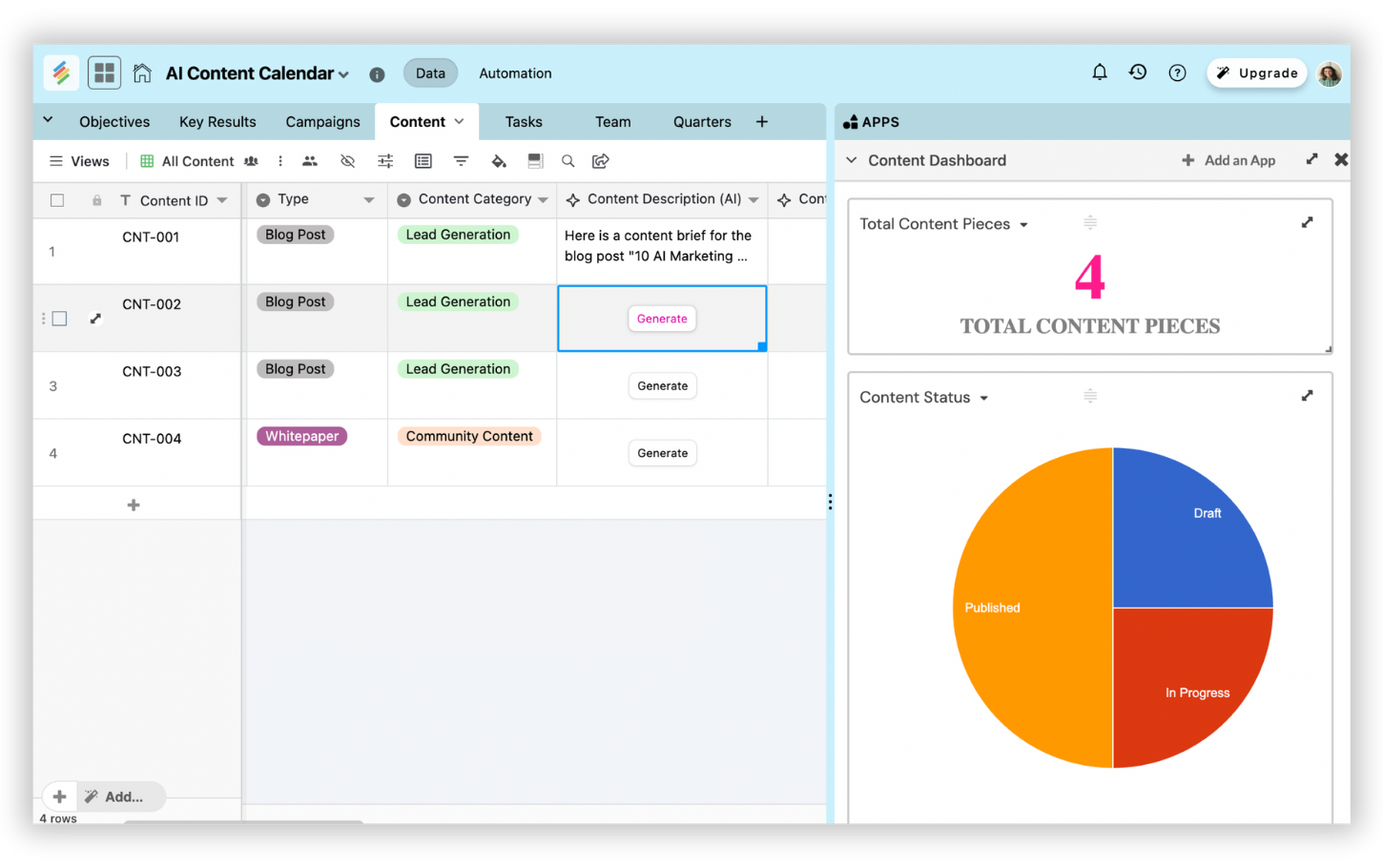
Features:
- Multiple views: Grid, Kanban, Calendar, Gallery, Timeline.
- Custom templates and automations.
- Elaborated collaboration tools, permission management, and fine-grained tracking.
- In-built integrations: Analytics, Campaign Management, Social Platforms, and others.
- Live dashboards with real-time insights.
- AI-based workflows to save on manual efforts.
Reviews:
- G2: 4.7 stars; 81 reviews
- Capterra: 4.8 stars; 80 reviews
“Scalability pricing plans are designed to accommodate teams of all sizes, from small businesses to large enterprises it is relatively easy to use with an intuitive interface and customisable templates.” – Insides Sales Representatives, Small-Business (G2 Review, 2025)
Pricing:
- Free-to-pro and business flexible plans, starting at $10/user/month. Stackby AI can be selected as an add-on. Free trial and yearly billing discounts.
2. Monday.com
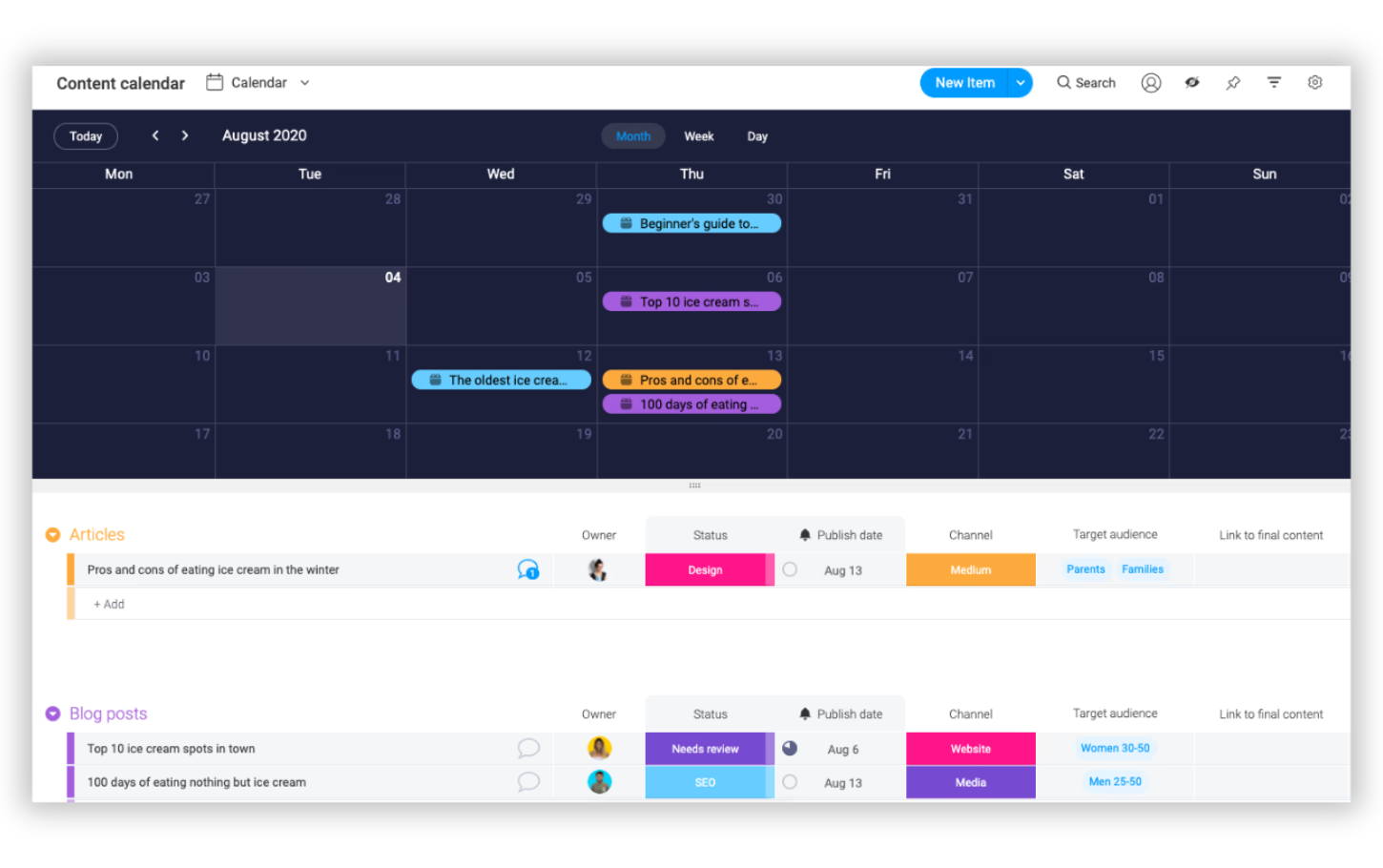
Monday.com is an attractive platform that enables teams to plan campaigns and monitor deadlines with multiple content calendar templates.
Features:
- Drag-and-drop scheduling, workflow customisation and automation.
- Collaboration and integration tools.
Reviews:
- G2: 4.7 stars; 8,049 reviews
- Capterra: 4.6 stars; 3,845 reviews
Pricing:
- Plans start at $9/user/month.
3. Airtable
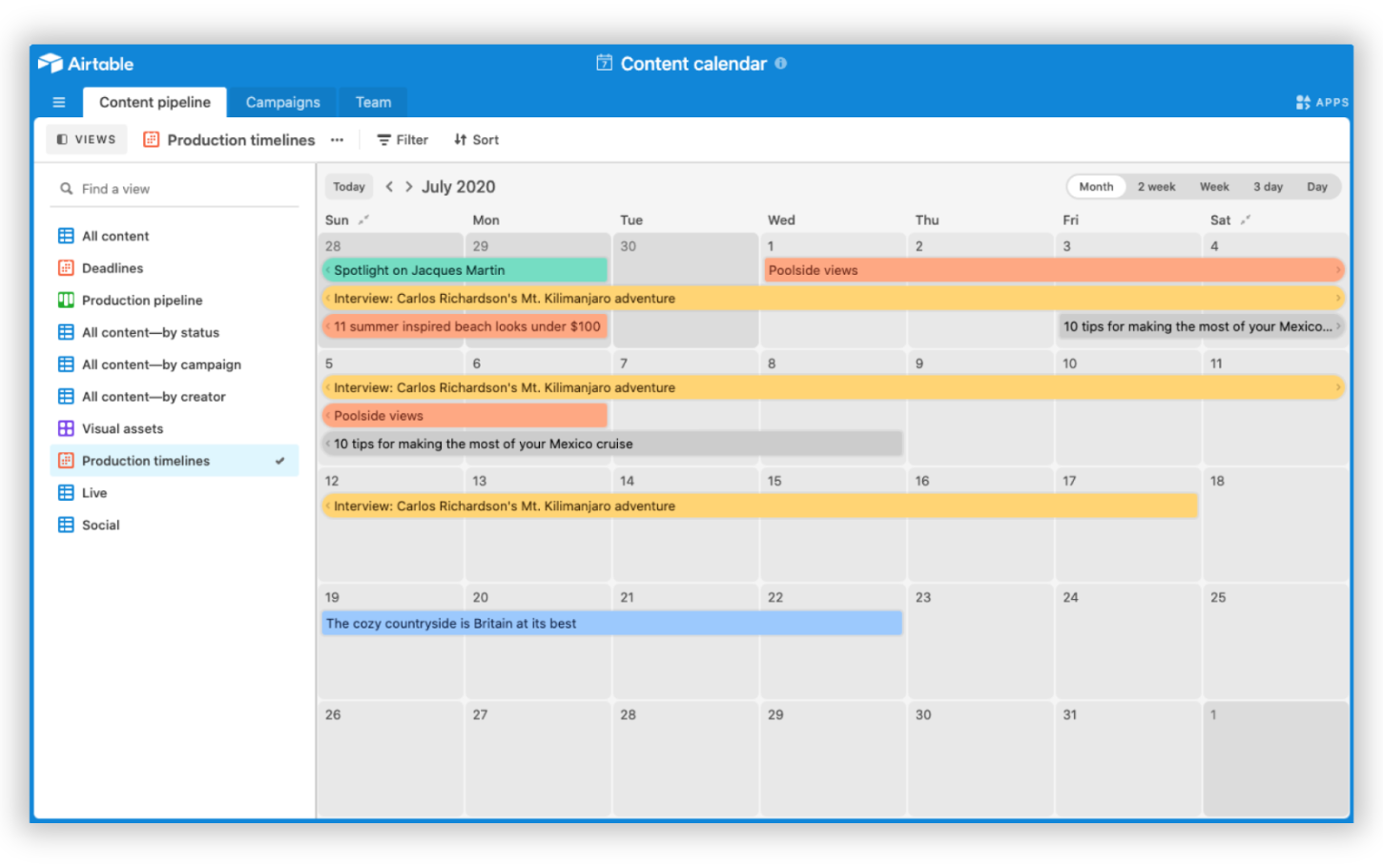
Airtable is a spreadsheet and database hybrid that provides the flexibility and scalability for content planning.
Features:
- Several perspectives (calendar, grid, Kanban), strong integrations, and templates.
- Project-specific custom fields.
Reviews:
- G2: 4.6 stars; 2,126 reviews
- Capterra: 4.7 stars; 1,781 reviews
Pricing:
- Free tier available. The starting price for paid plans is $20/user/month.
4. Smartsheet
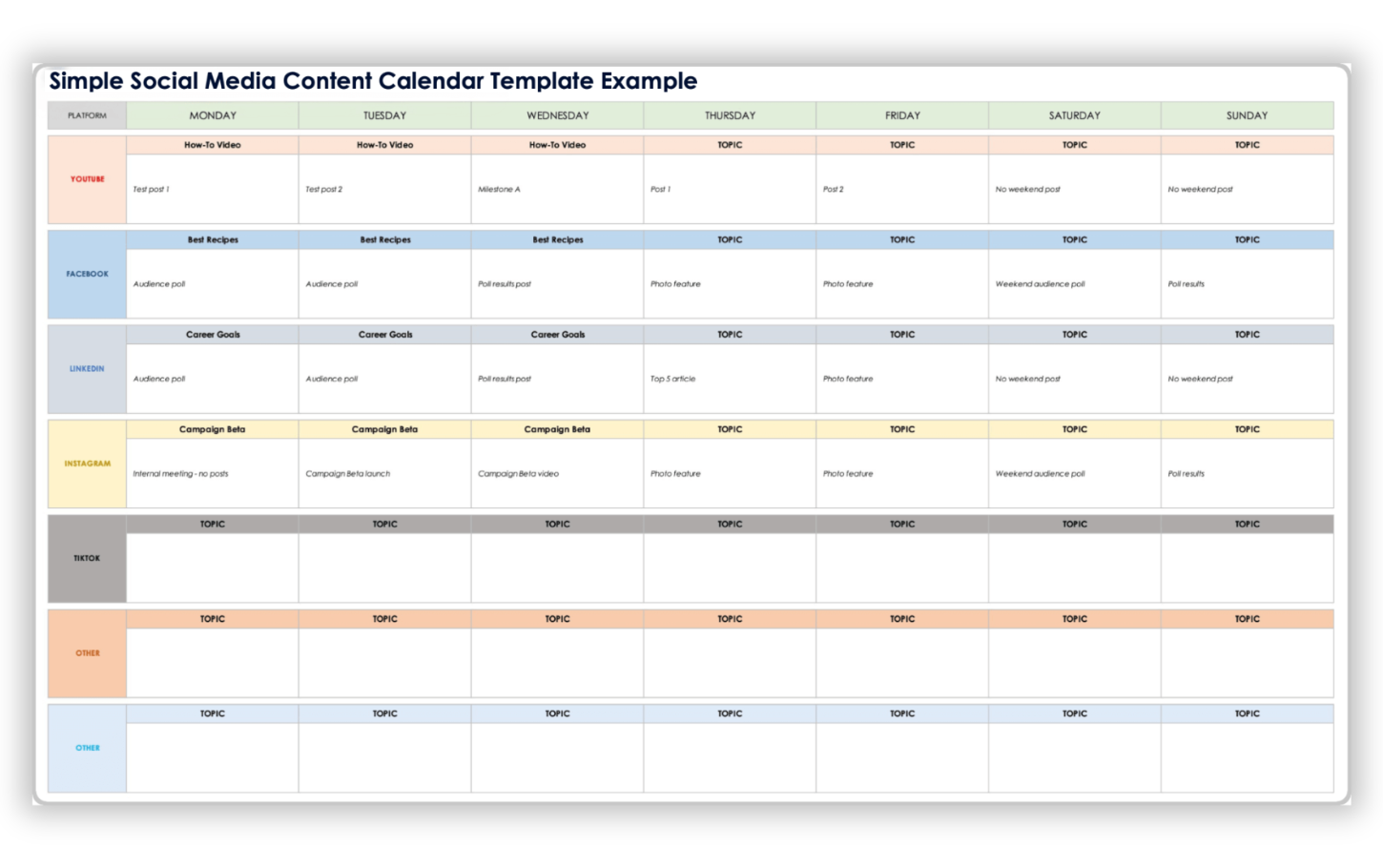
Smartsheet provides project management capabilities with a content calendar format that allows comprehensive content management.
Features:
- Gantt charts, automation and attachment support.
- Massive update and workflow customisation.
Reviews:
- G2: 4.4 stars; 11,281 reviews
- Capterra: 4.5 stars; 2,888 reviews
Pricing:
- Begins at $9/user/month; free trial option.
5. Opal
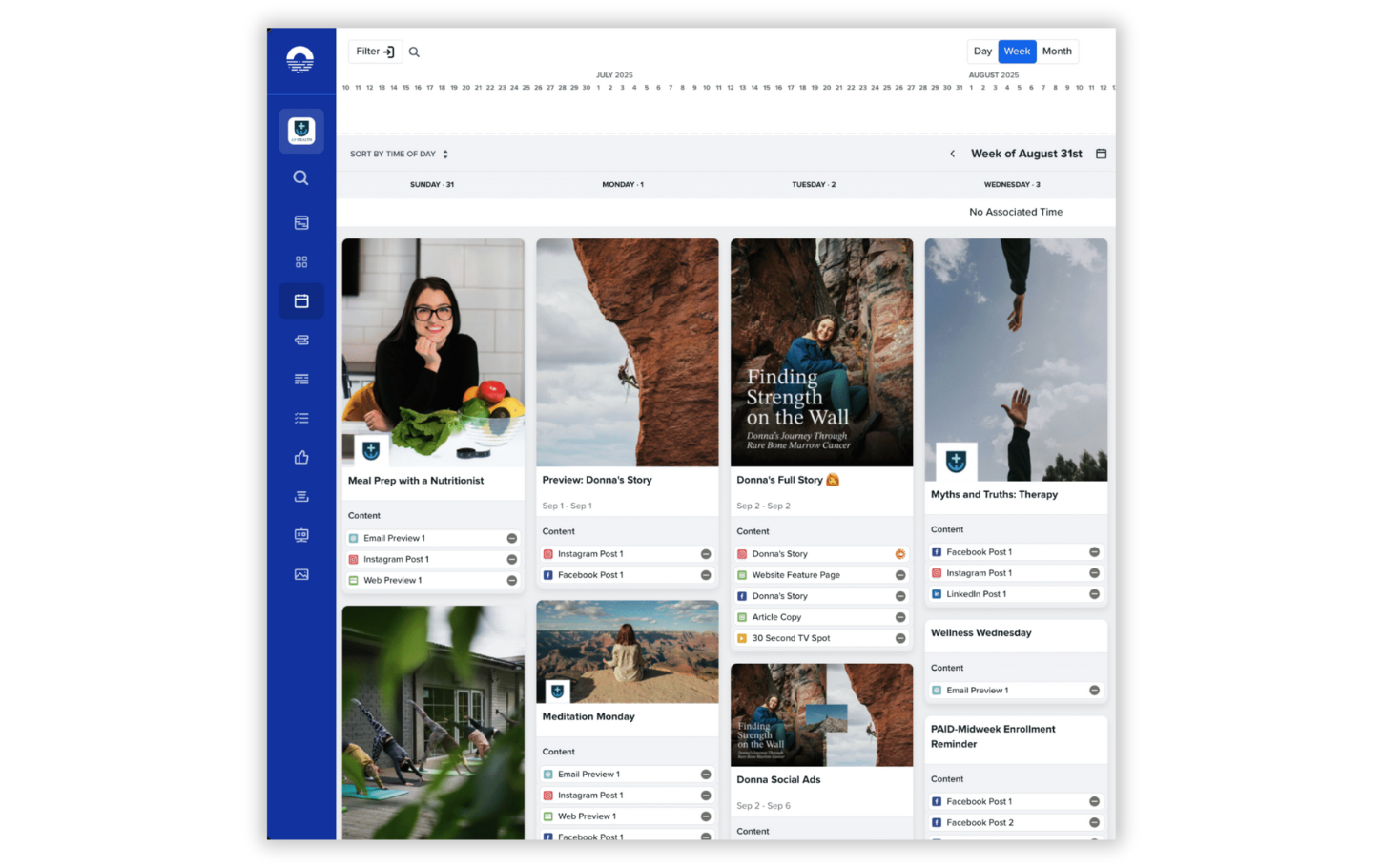
Opal assists marketing teams in unifying content planning across campaigns using dynamic templates and unlimited storage.
Features:
- Flexible views (month, week, day), real-time editing, and access to the whole organisation.
- Status updates and wide asset support are automated.
Reviews:
- G2: 4.1 stars; 110 reviews
- Capterra: 4.3 stars; 35 reviews
Pricing:
- Begins at $8.29/user/month.
6. Kapost
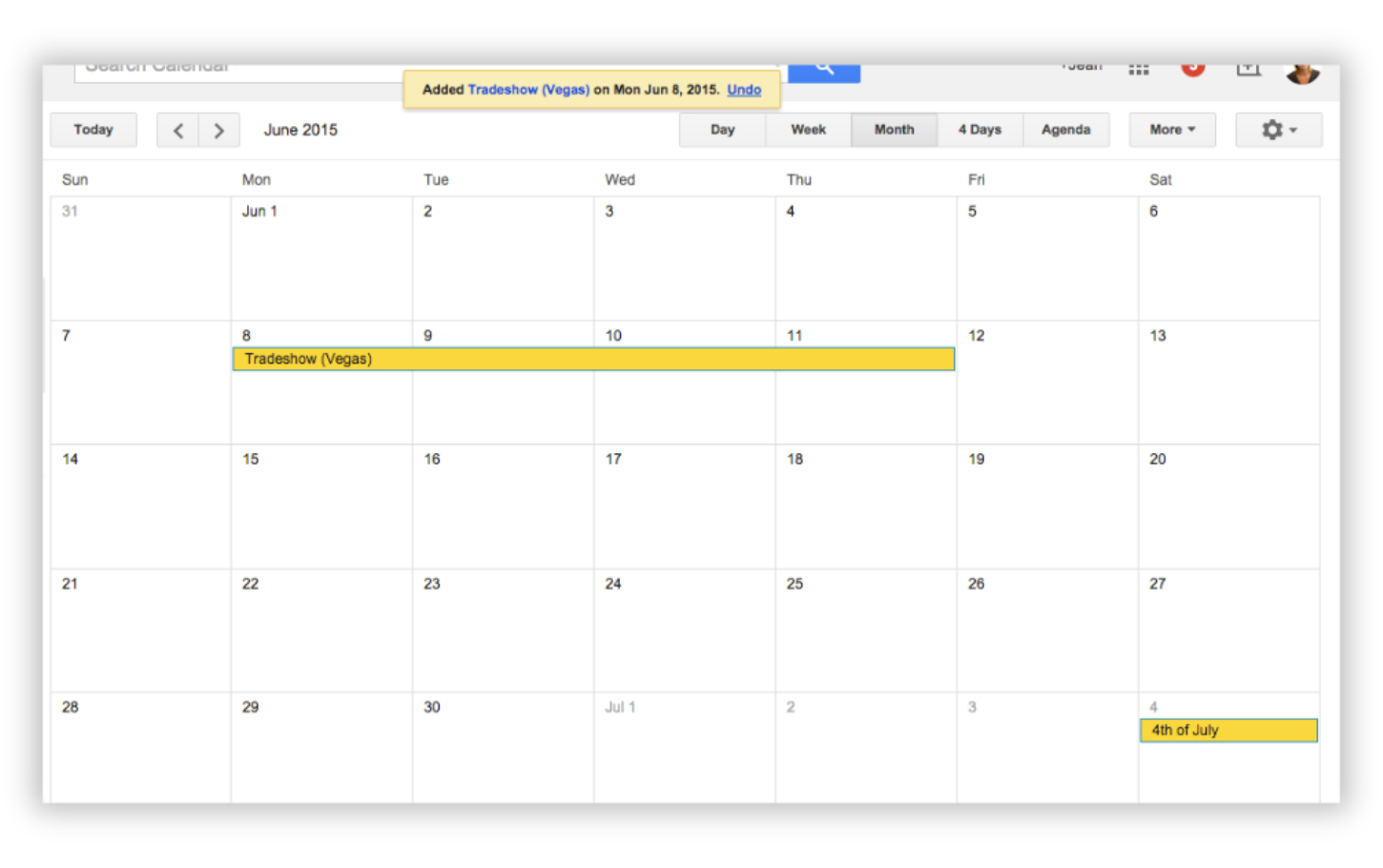
Kapost is designed to support big organisations with complicated content management and cross-channel campaigns.
Features:
- Workflow automation, content repository, performance tracking.
- Teamwork tools and custom approval levels.
Reviews:
- G2: 4 stars; 42 reviews
- Capterra: 4.5 stars; 15 reviews
Pricing:
- Does not have a free version.
- subscription-based and can range from $1,200 to over $3,000 per month
7. Sprinklr

The unified calendar of Sprinklr focuses on social media content and provides real-time tracking and analytics across platforms.
Features:
- Cross-channel planning, interaction analytics, and asset management.
- International cooperation.
Reviews:
- G2: 4 stars; 753 reviews
- Capterra: 4.2 stars; 76 reviews
Pricing:
- Not a free platform.
- Custom quote required.
8. ClickUp
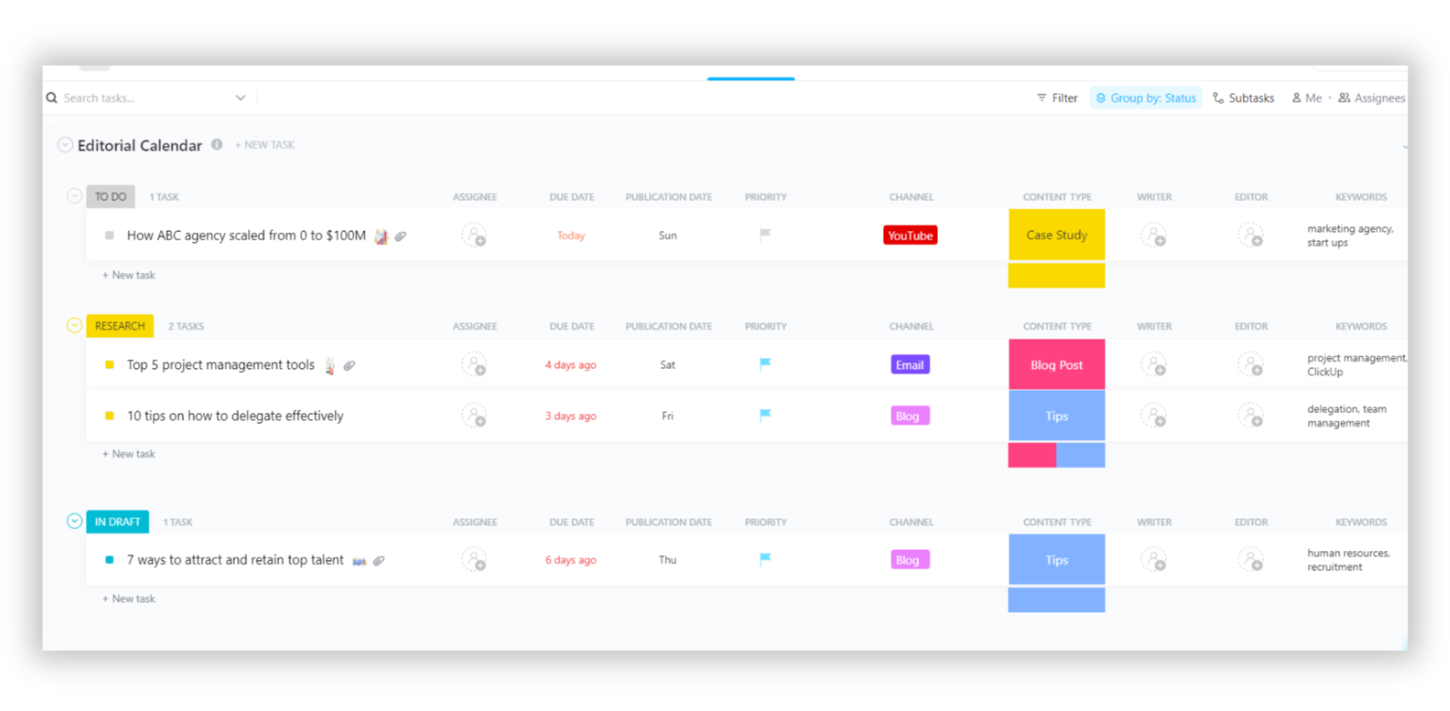
ClickUp provides a customizable workspace that can be used to plan, track, and review any content.
Features:
- Multiple views, automation, integrations, and performance monitoring.
- Live notifications and reminders.
Reviews:
- G2: 4.7 stars; 10582 reviews
- Capterra: 4.6 stars; 4502 reviews
Pricing:
- Free, paid plans starting with $7/user/month.
9. Trello
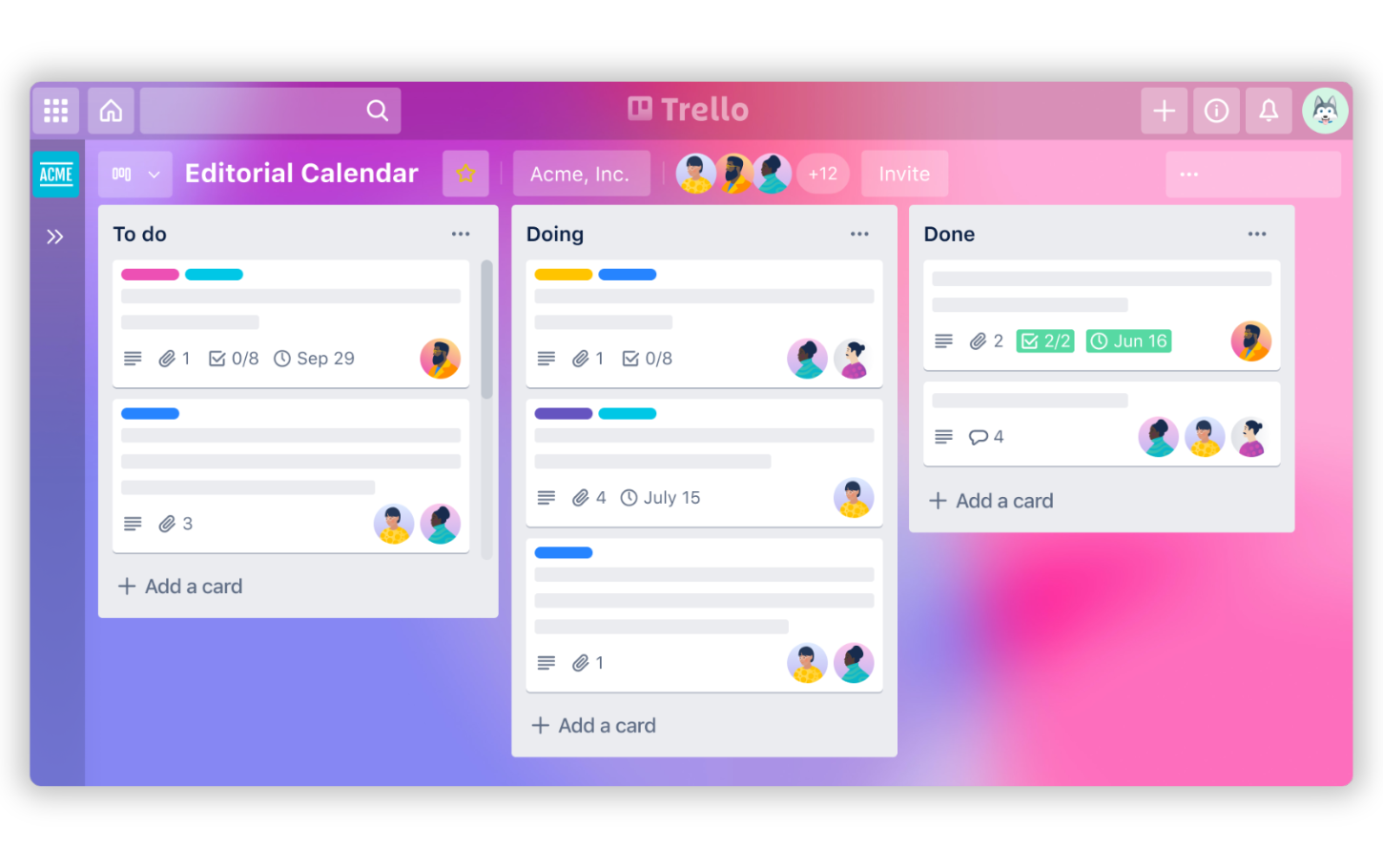
Trello is a visual project management software that is used for simple content calendar requirements with boards, cards, and speedy planning.
Features:
- Kanban boards, drag-and-drop, checklists, due dates.
- Automation via Power-Ups
Reviews:
- G2: 4.4 stars; 13773 reviews
- Capterra: 4.5 stars; 23389 reviews
Pricing:
- Free plan, premium starting at $5/user/month.
10. Planable
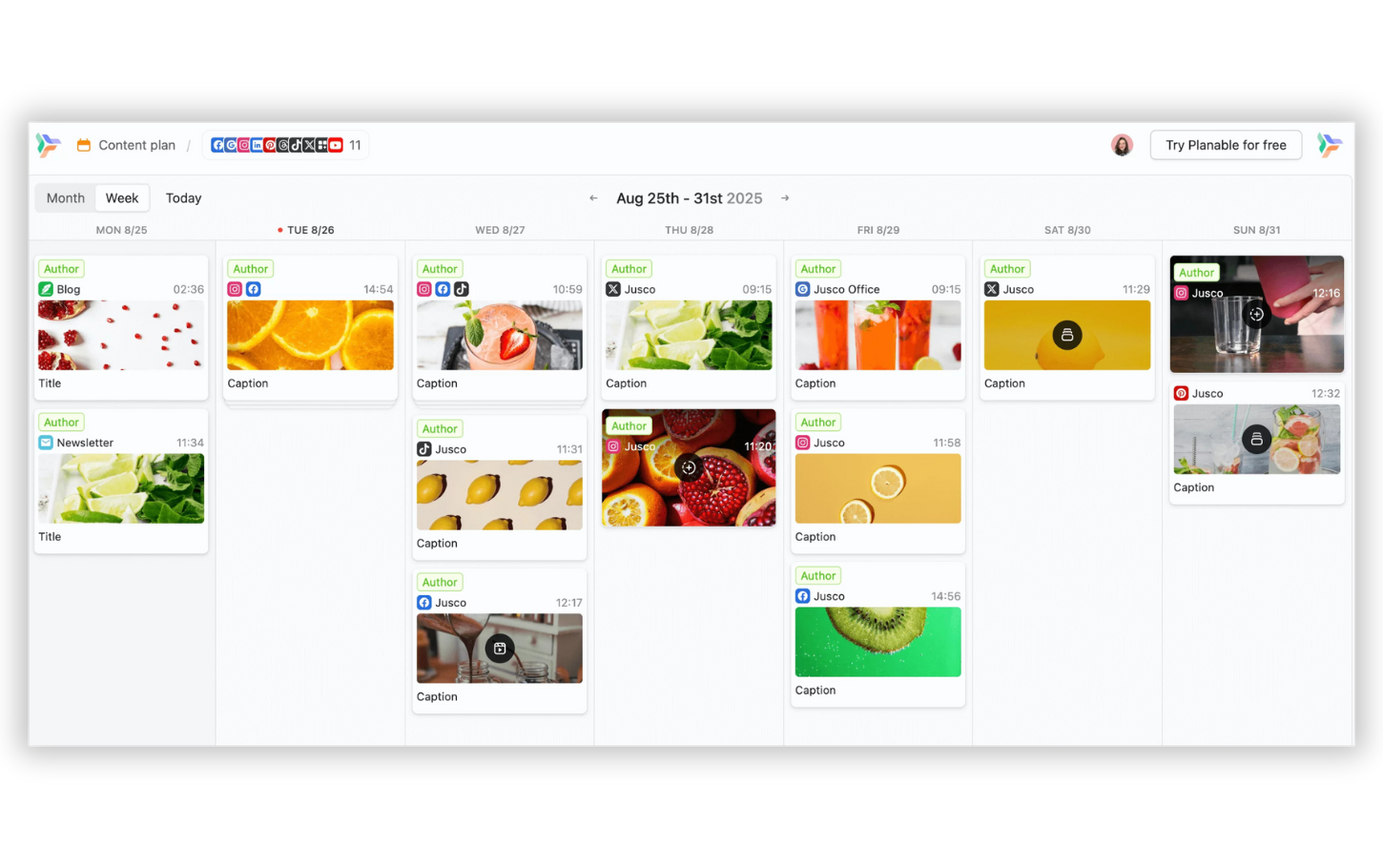
Planable automates the approval and scheduling of content to social media teams and agencies.
Features:
- One-Click approvals, collaboration, visual calendar, drag-and-drop.
- Comments and feedback tools.
Reviews:
- G2: 4.6 stars; 912 reviews
- Capterra: 4.5 stars; 314 reviews
Pricing:
- Beginning at $33/user/month; trial is given.
11. Asana

Asana offers a powerful project and deadline tracking system and has templates for content calendars.
Features:
- Custom fields, timeline view, integrations, automation.
- Commenting and proofing tools.
Reviews:
- G2: 4.3 stars; 9,347 reviews
- Capterra: 4.5 stars; 11,998 reviews
Pricing:
- Free basic plan; premium: $10.99/user/month.
All these content calendar software make it very easy to plan, track and optimise. Choose Stackby as the most flexible, scalable solution for the content team in 2025
How to Choose the Best Content Calendar Software?
The decision to select the most effective content calendar software is not as straightforward as picking the first available tool. The right content calendar tool assists teams in avoiding confusion, becoming organised, and growing steadily. The following are eight key criteria for making the smart choice.
1. Ease of use
Your team will not use it if it takes hours to set up or learn. Identify software that has an easy-to-use interface, drag-and-drop scheduling and easy setup. And then you will be eager to begin listing content ideas immediately.
2. Custom Views
Each team operates in a different way. A quality content calendar software has the ability to switch between monthly, weekly, and custom views. It should allow you to sort by status or channel, thus no one can see unnecessary clutter.
3. Automation
Automation conserves time and energy. With automation, reminders appear when it is time to do something, status updates are automatic, and repetitive tasks disappear. Look for rule-based workflows and automated notifications.
4. Collaboration
The planning of content is a collaborative work. The most effective tools enable multiple users to edit, review, comment and assign tasks in real-time. In such a manner, marketing, design, and leadership can collaborate together without creating confusion.
5. Custom Fields
Each business monitors different information. Advanced software allows you to create specific fields of categories, deadlines, owners, keywords, etc. Customisation assists everyone in receiving what they require.
6. Range of Attachment Supported
Modern campaigns require numerous files. Select platforms that allow images, documents, videos and others, all attached to calendar entries. This maintains assets in a structured and convenient way.
7. Performance Tracking
Go beyond scheduling. The most suitable content calendar tool provides analytics: monitor engagement, campaign performance, and audience development. Using this data, you can keep on improving.
8. Connect Multiple Datasets
Your calendar must be compatible with other tools. Best platforms, such as Stackby, provide integration and data sync, letting you connect your calendar to social media, project management, or analytic platforms. This forms an integrated workflow and eliminates silos.
The correct content calendar software will result in less guessing and more growth. These features are important, and once you priorities them, you will know how to organize your team's future clearly and confidently.

Content Calendar Software FAQs
Below are the responses to the most frequently asked questions regarding the content calendar software, written in an easy-to-understand manner.
1. What is the best content calendar software?
No universal solution exists; still, the appropriate content calendar tool is related to the number of employees in your team, the complexity of the working process, and the priorities. Stackby is the best choice in 2025, especially among individuals who want flexibility, seamless integrations, and an AI-powered organisation. It integrates the simplicity of spreadsheets with intelligent automations, which makes it a superior choice among modern teams.
Monday.com, Airtable, and Smartsheet are other popular content calendar tools that have been praised for their easy-to-use, visual planning, and customizable templates. Ultimately, the most appropriate tool is the one that will enable your team to remain consistent, organised, and conscious of all deadlines.
2. Why do I need content calendar software?
An effective content calendar tool helps to organise the content creation mess. Without it, teams are prone to missing deadlines, misaligned campaigns, and last-minute rushes. Its key advantage includes enhanced teamwork; everyone is aware of what's happening and when. It also offers a visual map, which assists you in mapping seasonal campaigns and evergreen content months in advance.
Teams accomplish more, experience less stress, and remain consistent with publishing. Using good content calendar software, feedback loops are reduced, and the planning is data-driven, not guesswork-driven. This will make your marketing more proactive and strategic, rather than reactionary.
3. What’s the difference between an editorial calendar and a content calendar?
The two terms are frequently used interchangeably, but there are some major differences. The large-scale document is an editorial calendar. Imagine it as a bird’s-eye view of your 6-12-month strategy: monitoring themes, campaigns and business goals. It’s the place you match content with business objectives, strategic planning and significant deadlines.
On the other hand, a content calendar becomes granular. It addresses the daily and weekly cycles, planning particular blog posts, social media updates, emails, and videos. It is strategic, all headlines, drafts and dates of publication are plotted and traced. In short, editorial calendars are the ones that determine the direction, whereas content calendars implement the day-to-day details. A combination of both is used by most of the high-performing teams to plan smoothly and deliver on time.
Need to be organized and boost your content? Test the content calendar software of Stackby. Regardless of whether you have a team that is taking its first steps or growing exponentially, Stackby has AI automation, powerful templates, and hassle-free teamwork at your fingertips. Join your free trial now and discover the simplicity of content planning!

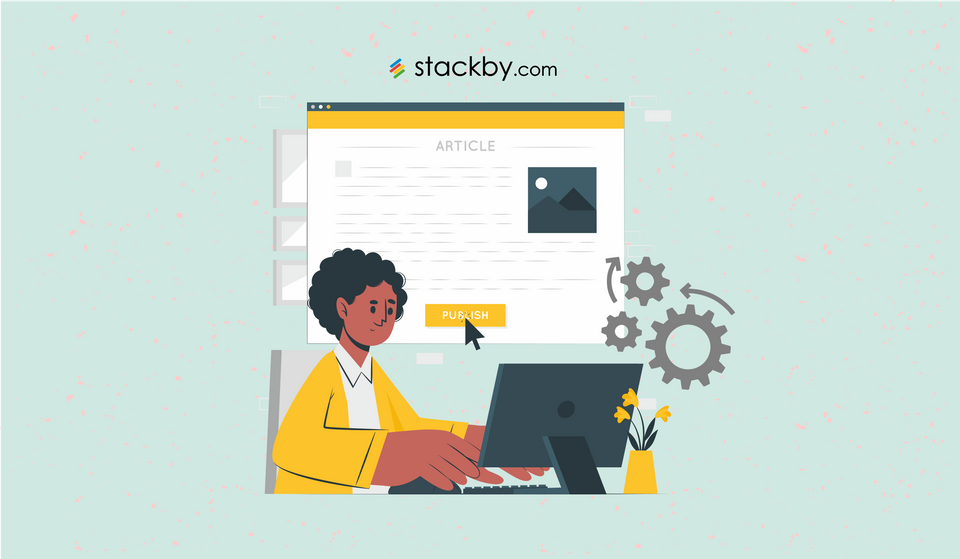

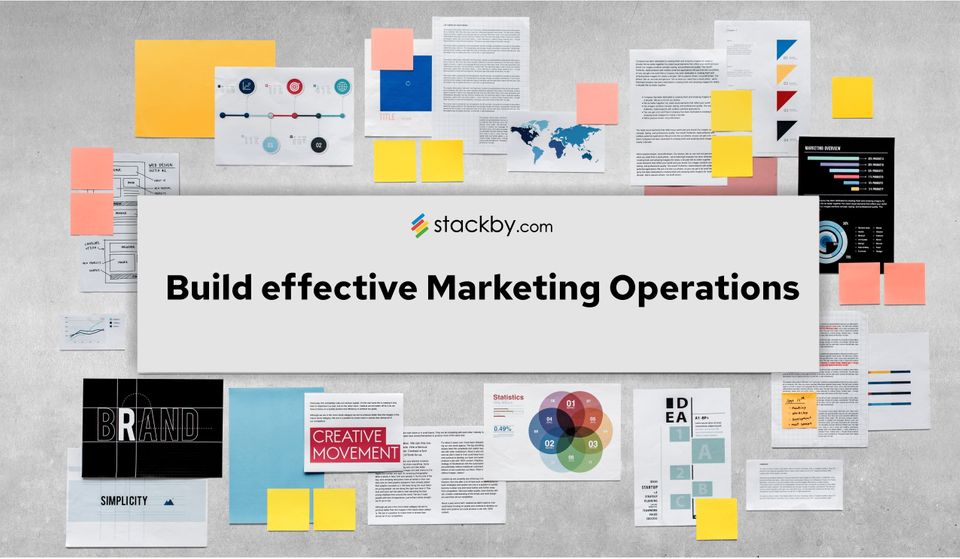
![10 Best Free Database Templates for Marketing Agencies in [2025]](/blog/content/images/size/w960/2024/03/stackby-Database-templates-for-marketing-agencies-1-blog-post-2.jpg)